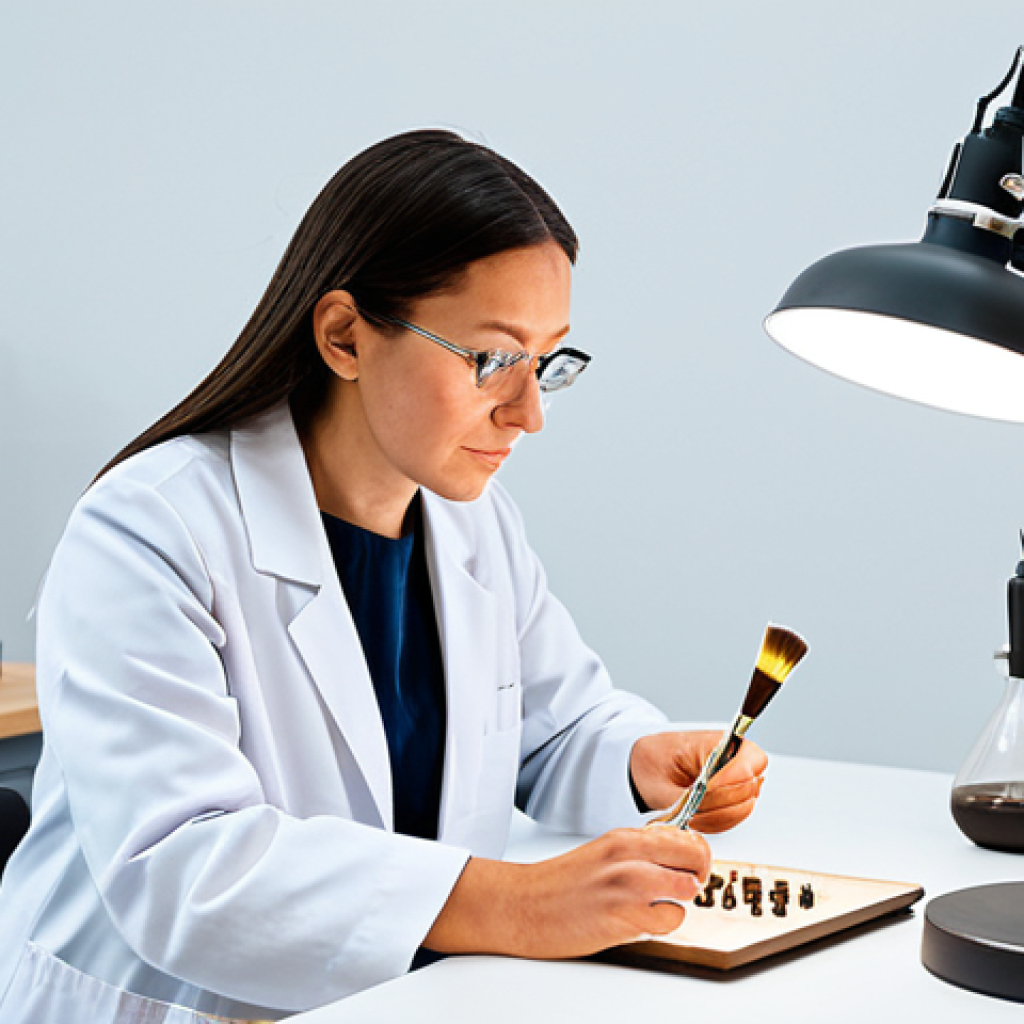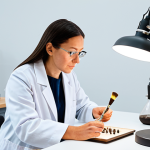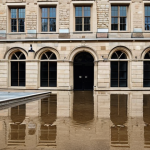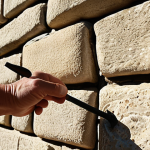Have you ever walked past an old building, perhaps a historic landmark in your town, and felt a profound connection to the stories it silently holds? I know I have.
After years immersed in a career that felt increasingly detached, the whisper of a different path, one dedicated to safeguarding the irreplaceable tapestry of human history, became a resounding call.
It’s a calling that’s more relevant than ever, especially as climate change poses unprecedented threats to ancient sites, and cutting-edge technology like 3D scanning and AI-driven predictive maintenance revolutionize how we approach conservation.
From my own deep dives into this fascinating world, speaking with passionate conservators and digital preservationists, I’ve realized it’s a field brimming with both challenge and immense reward.
If you’re pondering a transition into this vital, evolving profession, one where every day brings new purpose, I’ll tell you for sure!
The Irresistible Pull: Why Conservation Calls to the Soul

Stepping away from a path that once felt secure, yet increasingly hollow, to pursue something as profoundly meaningful as cultural heritage conservation, isn’t just a career pivot; it’s an awakening.
I remember the exact moment the idea truly took root for me. It wasn’t a sudden epiphany, but a slow, persistent whisper that grew louder with every news report about endangered historical sites or every documentary showcasing the painstaking work of art restoration.
It was a realization that my skills, my passion for history, and my desire to make a tangible difference could converge in a field that actively fights against the erosion of our shared past.
What I’ve learned, through countless conversations with those already entrenched in this world and through my own forays into its complexities, is that this isn’t merely about preserving old objects; it’s about safeguarding human stories, memories, and the very essence of what makes us, us.
It’s a field that demands a unique blend of scientific rigor, artistic sensibility, and an unwavering commitment to legacy. It’s truly a labor of love, but one that offers unparalleled satisfaction.
1. Beyond the Museum Walls: A Broader Understanding of Heritage
When most people think of cultural heritage, grand museums and ancient artifacts often come to mind first. And while those are certainly central, my journey has taught me just how vast and varied the landscape of conservation truly is.
It’s not just about restoring a Renaissance painting or excavating an ancient ruin. It encompasses the preservation of intangible heritage, like oral traditions and traditional crafts, and the meticulous care of historical buildings, archives, and even entire landscapes.
I’ve been fascinated by how conservators don’t just fix things; they perform intricate diagnostics, using advanced imaging techniques and material science to understand an object’s life story, its vulnerabilities, and the best way to ensure its survival for future generations.
This holistic view of heritage, moving beyond just tangible objects, was a revelation for me and made the field feel so much richer and more impactful than I had initially imagined.
It suddenly encompassed everything from conserving a vintage automobile to protecting indigenous languages, offering an incredible breadth of specializations.
2. The Urgent Call: Climate Change and Digital Preservation
The urgency to transition into this field feels more pressing now than ever before, especially given the escalating threats posed by climate change. Coastal erosion, extreme weather events, and changing environmental conditions are taking an unprecedented toll on historical sites globally.
I’ve personally seen reports on how rising sea levels threaten archaeological sites in coastal regions, and how increased humidity affects ancient papyrus scrolls.
It’s heartbreaking to imagine these irreplaceable pieces of our past simply washing away or decaying beyond repair. This stark reality means that conservation isn’t just about meticulous physical work anymore; it’s increasingly about proactive risk assessment, climate mitigation strategies, and the revolutionary role of digital preservation.
Technologies like 3D scanning, virtual reality, and AI-driven predictive maintenance are not just buzzwords here; they are becoming indispensable tools for documentation, monitoring, and even virtually rebuilding sites that are physically inaccessible or too fragile to touch.
This blend of traditional craft and cutting-edge tech is what truly excites me about the future of conservation.
Charting Your Course: Essential Skills and Educational Paths
Making the leap into cultural heritage conservation isn’t a whimsical decision; it requires deliberate planning and a commitment to acquiring a very specific, often multidisciplinary, skill set.
I remember feeling overwhelmed at first, staring at university course catalogs and job descriptions that seemed to demand an encyclopedia’s worth of knowledge.
But through perseverance, and by connecting with mentors, I realized it’s less about knowing everything upfront and more about building a strong foundational base upon which to specialize.
It’s a field that values both intellectual curiosity and practical aptitude, blending the rigorous academic with the hands-on craft. Think of it as an ongoing apprenticeship, even after you’ve earned your degrees, because every artifact, every site, presents a new set of challenges and learning opportunities.
1. Academic Foundations: Degrees and Specializations
Most conservation professionals hold advanced degrees, typically a master’s, in conservation, art history, archaeology, material science, or a related field.
When I was exploring options, I found programs that specifically focused on particular types of artifacts – textiles, paper, paintings, objects, or architectural conservation.
Some even blended in museum studies or heritage management. For example, many reputable programs in the UK, like those at University College London or the Courtauld Institute of Art, offer specialized postgraduate degrees.
In the US, institutions like the Winterthur/University of Delaware Program in Art Conservation or NYU’s Institute of Fine Arts conservation program are highly regarded.
My personal approach was to identify the areas I felt most drawn to – for me, it was the preservation of historical architecture and digital documentation – and then seek out programs or courses that offered strong modules in those areas.
It’s crucial to research program curricula thoroughly, looking at faculty expertise and practical training components.
2. The Interdisciplinary Skillset: More Than Just History
While a deep appreciation for history and culture is a given, successful conservators possess an incredibly diverse array of skills. I quickly learned that it wasn’t just about being good at art; it was about understanding chemistry, physics, and even engineering principles.
You need a meticulous eye for detail, immense patience, and superb problem-solving abilities. Beyond that, strong communication skills are paramount, as you’ll often need to explain complex conservation treatments to curators, stakeholders, and the public.
Manual dexterity, for obvious reasons, is also vital. And in today’s world, an aptitude for technology – whether it’s learning CAD software for architectural conservation or mastering photogrammetry for 3D modeling – is rapidly becoming non-negotiable.
I found myself diving into online courses on chemistry basics and even taking a beginner’s course in digital photography just to round out my understanding of the various facets involved.
| Key Skill Area | Examples of Practical Application | Why It’s Crucial |
|---|---|---|
| Scientific Literacy | Understanding material degradation (e.g., rust, mold), chemical interactions of treatments, environmental monitoring. | Allows for informed decisions on preservation methods, ensures treatments are reversible and safe for artifacts. |
| Technical Proficiency | Operating specialized equipment (microscopes, laser cleaners), precise application of adhesives, structural stabilization. | Enables delicate interventions and accurate execution of conservation plans. |
| Artistic & Historical Acuity | Identifying artistic periods, understanding cultural significance, recognizing historical modifications. | Informs ethical decisions about aesthetic integrity and historical authenticity during restoration. |
| Digital Competency | 3D modeling of sites, managing digital archives, using specialized software for image analysis, GIS mapping. | Essential for documentation, research, predictive analysis, and safeguarding digital assets. |
| Problem-Solving & Adaptability | Devising custom solutions for unique damage, adapting to unforeseen material reactions, working with limited resources. | Every artifact presents distinct challenges; requires innovative and flexible approaches. |
Forging Your Path: Internships, Volunteering, and Networking
Degrees and theoretical knowledge are foundational, but the real heart of a career in cultural heritage conservation lies in hands-on experience. This isn’t a field where you can just graduate and expect to walk into a senior position; practical experience is the bedrock upon which genuine expertise is built.
I quickly realized that every volunteer hour, every internship, every conversation with a seasoned professional wasn’t just building my resume, it was deepening my understanding, honing my skills, and solidifying my resolve that this was truly where I belonged.
It’s about getting your hands dirty, sometimes quite literally, and understanding the nuances that no textbook could ever fully convey.
1. The Value of Internships and Apprenticeships
Internships are, without exaggeration, indispensable. They offer an unparalleled opportunity to work alongside experienced conservators, apply theoretical knowledge in real-world scenarios, and gain exposure to the ethical considerations that underpin every conservation decision.
I started with a volunteer role at a local historical society, which led to a summer internship at a regional conservation center. The difference between learning in a classroom and actually treating an object, feeling its age and fragility, was profound.
These experiences also help you discover which specialization genuinely resonates with you. Some internships are paid, particularly at larger national institutions like the British Museum or the Smithsonian, while others may be unpaid but offer invaluable connections and training.
Don’t be afraid to start small; even assisting with documentation or environmental monitoring can open doors.
2. Volunteering: A Gateway to Practical Experience and Community
If formal internships are hard to come by initially, or if you’re still exploring your options, volunteering is an excellent alternative. Local museums, archives, historical societies, and even private conservation studios often rely heavily on volunteer support.
My first foray into conservation was volunteering at a community art gallery, helping with collection management and basic environmental monitoring. This low-stakes environment allowed me to ask questions, observe ongoing projects, and demonstrate my commitment.
It’s also an incredible way to network and build relationships within the local heritage community. I met so many inspiring individuals through volunteering who later offered guidance, advice, and even job leads.
Plus, there’s a real sense of contributing to your community’s cultural fabric, which is incredibly rewarding in itself.
Building Your Network: Connections That Count
In any specialized field, who you know can be just as important as what you know, and cultural heritage conservation is no exception. It’s a relatively small, interconnected community, built on shared passion and collaboration.
I’ve found that the most valuable insights and opportunities often come through personal connections rather than simply browsing job boards. It’s about building genuine relationships, demonstrating your enthusiasm, and being a reliable, curious presence within the heritage ecosystem.
Don’t underestimate the power of a casual coffee chat or a follow-up email after a conference; these small interactions can lead to incredible breakthroughs.
1. Professional Associations and Conferences: Your Hub for Growth
Joining professional associations is a non-negotiable step for anyone serious about a career in conservation. Organizations like the American Institute for Conservation (AIC) in the US, or the Institute of Conservation (Icon) in the UK, offer a wealth of resources: job postings, professional development courses, ethical guidelines, and most importantly, networking opportunities.
Attending their annual conferences, even as a student or aspiring professional, is an absolute game-changer. I remember my first conference; walking into a room full of people who shared my niche passion was incredibly energizing.
I made it a point to introduce myself to speakers whose work I admired, exchange contact information, and simply listen to the vibrant discussions happening around me.
These events are not just for experts; they’re vital for emerging professionals to connect, learn, and stay abreast of the latest research and techniques.
2. Informational Interviews and Mentorship: Learning from the Best
One of the most effective strategies I employed was reaching out for informational interviews. It can feel a bit daunting at first, cold-emailing professionals you admire, but most conservators are incredibly generous with their time and knowledge.
I would simply ask for 20-30 minutes of their time to learn about their career path, their daily work, and any advice they might have for someone looking to enter the field.
These conversations not only provided invaluable insights into specific specializations but also often led to mentorship relationships. Having a mentor, someone who has navigated the challenges you’re facing and can offer candid advice, is truly priceless.
They can help you identify training gaps, navigate job applications, and even connect you with other professionals in their network. My own mentor helped me refine my portfolio and even reviewed my cover letters, making a tangible difference in my job search.
The Digital Frontier: Embracing Technology in Conservation
The world of cultural heritage conservation is rapidly evolving, and perhaps nowhere is this more evident than in the integration of cutting-edge technology.
When I first started exploring this path, I imagined dusty archives and delicate brushes. While those are still very much a part of the reality, I’ve been blown away by how digital tools are not just assisting but fundamentally transforming how we preserve the past.
This technological revolution is creating entirely new roles and demanding a blend of traditional expertise with digital prowess, making the field more dynamic and future-proof than ever before.
It’s exhilarating to be at the nexus of ancient history and bleeding-edge innovation.
1. 3D Scanning and Virtual Reality: Documenting and Experiencing Heritage
The ability to meticulously document historical sites and artifacts in three dimensions is revolutionary. Technologies like laser scanning and photogrammetry allow conservators to create incredibly accurate digital models of structures, sculptures, or even entire archaeological digs.
I’ve seen how these models are used for condition monitoring, allowing conservators to track subtle changes over time without physically touching the object.
More excitingly, these 3D models can be used to create immersive virtual reality (VR) experiences, making inaccessible sites available to a global audience or even virtually “rebuilding” ruins to their original splendor.
Imagine exploring a Roman villa or an ancient Egyptian tomb from your living room, or even using VR to train future conservators in a safe, virtual environment.
This digital documentation also serves as an invaluable backup, a “digital twin,” protecting against loss due due to natural disasters or conflict.
2. AI and Big Data: Predictive Preservation and Smart Monitoring
The application of artificial intelligence (AI) and big data analytics in conservation is still in its nascent stages, but the potential is enormous and incredibly exciting.
AI algorithms can analyze vast datasets of environmental conditions, material properties, and historical degradation patterns to predict future risks to artifacts or sites.
For example, AI-powered sensors can continuously monitor humidity, temperature, and light levels in a museum, alerting conservators to potential issues before they cause irreversible damage.
Furthermore, AI can assist in the classification and analysis of complex archival materials, making vast historical collections more accessible and searchable.
I recently read about a project where AI was used to identify and categorize fragmented ancient texts, dramatically speeding up a process that would have taken human scholars decades.
This proactive, data-driven approach to preservation is fundamentally shifting conservation from reactive treatment to preventative care, ensuring resources are allocated effectively and risks are mitigated before they escalate.
The Realities and Rewards: A Life in Conservation
Transitioning into cultural heritage conservation isn’t just about learning new skills or landing a job; it’s about embracing a lifestyle that is rich in purpose but also presents its own unique set of challenges.
When I began this journey, I had a somewhat romanticized view of the profession. While the romance is certainly there, woven into the fabric of working with priceless objects and ancient sites, I’ve also come to appreciate the grit, patience, and often quiet perseverance required.
It’s a field that demands passion, but also realistic expectations about its demands and its profound satisfactions.
1. Navigating the Challenges: Patience, Funding, and Advocacy
One of the first realities I encountered was the immense patience required for conservation work. Restoring a damaged artifact isn’t a quick fix; it’s a painstaking, often slow process that can take weeks, months, or even years for complex projects.
You also learn to live with the fact that funding can be a constant challenge. Many conservation initiatives rely on grants, donations, and government support, which can fluctuate.
This means that advocacy is a crucial part of the job – making the case for why cultural heritage matters, why it’s worth investing in, and why its preservation benefits society as a whole.
I’ve seen passionate conservators spend as much time writing grant proposals and engaging with policymakers as they do with their hands-on work. It’s a testament to their dedication to the cause, knowing that securing resources is integral to their mission.
2. The Unquantifiable Rewards: Purpose and Legacy
Despite the challenges, the rewards of a career in cultural heritage conservation are, for me, immeasurable. There’s an unparalleled sense of purpose that comes from knowing you are directly contributing to safeguarding human history, ensuring that the stories and artistic achievements of the past endure for future generations.
I still get goosebumps thinking about the first time I held an object that was hundreds of years old, knowing my work was helping it survive for another hundred.
It’s a profound connection to time and humanity. Beyond that, the continuous learning, the intellectual stimulation of solving complex problems, and the camaraderie with like-minded individuals are deeply satisfying.
Every day brings a new puzzle, a new historical narrative to uncover, and a new opportunity to make a tangible difference. It’s not just a job; it’s a vocation that offers a profound sense of fulfillment and the incredible privilege of leaving a lasting legacy.
In Conclusion
Stepping into the world of cultural heritage conservation has been nothing short of transformative for me. It’s a journey that constantly challenges, educates, and inspires, offering a profound sense of purpose that’s hard to find elsewhere.
If you feel that same irresistible pull – a deep-seated desire to connect with the past and safeguard it for the future – know that this path, while demanding, offers unparalleled fulfillment.
It’s about more than just a career; it’s about becoming a steward of our collective human story, a legacy builder, and a vital link between what was and what will be.
Embrace the learning, seek out the experiences, and trust that your passion will lead you to truly meaningful work.
Useful Resources & Tips
1. Gain Practical Experience Early: Start with volunteering at local museums, archives, or historical societies. Even seemingly small tasks can provide invaluable exposure and help you build connections.
2. Join Professional Organizations: Becoming a member of associations like the American Institute for Conservation (AIC) or the Institute of Conservation (Icon) offers access to job boards, training, ethical guidelines, and a vibrant community of professionals.
3. Cultivate a Multidisciplinary Mindset: Conservation isn’t just about art history. Develop skills in chemistry, physics, digital technology, and even project management. The more diverse your toolkit, the more adaptable and valuable you’ll be.
4. Network Relentlessly: Attend conferences, workshops, and informational interviews. The cultural heritage field is often built on strong personal connections and mentorship. Don’t be shy about reaching out and learning from experienced professionals.
5. Embrace Technology: The future of conservation heavily relies on digital tools. Familiarize yourself with 3D scanning, photogrammetry, digital archiving, and data analysis. These skills are becoming increasingly essential for documentation and predictive preservation.
Key Takeaways
Cultural heritage conservation is a profoundly rewarding field that bridges history, science, and art. It demands a unique blend of academic rigor, practical skills, and an unwavering commitment to preserving our shared past.
Success hinges on a strong educational foundation, hands-on experience through internships and volunteering, and robust networking within a passionate community.
Embracing cutting-edge technologies like 3D scanning and AI is crucial for the future of the profession, enabling more effective documentation, monitoring, and public engagement.
While challenges like funding and the painstaking nature of the work exist, the unparalleled satisfaction of safeguarding human stories for future generations makes it a truly fulfilling vocation.
Frequently Asked Questions (FAQ) 📖
Q: Okay, so you’ve painted a picture of a field that’s not just vital, but also facing massive challenges like climate change and embracing wild new tech. What’s the biggest misconception people usually have when they think about working in heritage conservation today? Like, what did you get wrong before you really dove in?
A: Oh, that’s such a good question, and honestly, it’s one I ask myself too! I think the prevailing image for so many is still… well, it’s a bit dusty, isn’t it?
Like you’re just cataloging old artifacts in a quiet museum basement, or perhaps meticulously restoring a painting for months on end, alone. And sure, those elements exist and they’re crucial!
But what people miss, what I definitely underestimated until I was truly immersed, is the sheer dynamism of it all. It’s not just about preserving the past; it’s about active engagement with the future, often under immense pressure.
I remember speaking with a conservator who had to rapidly assess a historic coastline building in New England after a freak storm – not just its structural integrity, but how rising sea levels were already eroding its very foundations.
It wasn’t a quiet, methodical process; it was a race against time, integrating satellite data with on-site surveys, coordinating with emergency services.
It’s incredibly hands-on, problem-solving on the fly, and utterly interdisciplinary. It’s far from a staid, backward-looking profession; it’s vibrant, urgent, and constantly evolving.
Q: You mentioned feeling ‘detached’ in your previous career before this calling became ‘resounding.’ Many of us have felt that exact thing. What was that pivotal moment or realization for you, and what genuine, heartfelt advice would you give someone reading this who’s also yearning to make that kind of significant career leap into a purpose-driven field?
A: Gosh, that ‘detached’ feeling… it’s a heavy one, isn’t it? For me, there wasn’t a single lightning bolt, but more of a slow, insistent whisper that grew louder.
I was in a corporate role, and while it paid the bills and looked good on paper, I just felt like I was churning out widgets, disconnected from anything truly meaningful.
The pivotal moment? It was probably when I found myself spending my evenings and weekends volunteering at a local historical society, not out of obligation, but because it genuinely energized me.
I was helping digitize old town records, and holding those brittle, century-old documents, seeing the actual handwriting of people long gone… it felt like touching history, connecting with human lives in a way my day job never could.
The real epiphany hit when I realized that energy and passion shouldn’t be relegated to my ‘off-hours.’So, my advice, heart-to-heart? Don’t wait for permission.
Start small. Volunteer. Take an online course – even if it’s just ‘Introduction to Archaeology 101.’ Go to local preservation society meetings, even if you feel like an outsider.
Talk to everyone you can in the field. I remember striking up a conversation with an architect who specialized in historic building restoration at a community fair; that single chat led to an internship lead, which led to a network.
It’s about building a bridge, brick by metaphorical brick, from where you are to where you want to be. It won’t happen overnight, and there might be financial trade-offs, but the profound sense of purpose?
That’s priceless, truly.
Q: The idea of cutting-edge tech like 3D scanning and
A: I in heritage conservation sounds incredibly futuristic. How does that really play out on the ground, day-to-day? Are we talking about conservators needing to be coding wizards, or how does this advanced tech actually augment, rather than replace, the traditional human touch in preserving our past?
A3: That’s such a crucial point, and it’s something I hear a lot. When people think ‘AI’ and ‘3D scanning,’ they often picture a sterile, purely digital process.
But honestly, it’s anything but! Think of these technologies not as replacements for the human hand or eye, but as incredibly powerful tools that extend our capabilities, letting us do things we never dreamed of.
I was recently chatting with a colleague at a site in Arizona, where they’re using lidar and drones to map ancient cliff dwellings. Before, a team might spend weeks, even months, painstakingly measuring and sketching, often in treacherous conditions.
Now, they get incredibly precise 3D models in days. But here’s the kicker: someone still has to interpret that data! An expert eye is needed to identify erosion patterns that the AI might highlight, but can’t understand in a nuanced historical context.
They use the 3D models to plan conservation work with pinpoint accuracy, simulate the impact of environmental changes, or even create virtual reality experiences for public engagement.
It doesn’t mean the conservator is suddenly a full-time programmer; rather, they’re becoming adept at using these digital insights to make better, faster, and more informed decisions.
It’s about leveraging technology to protect these irreplaceable treasures more effectively, giving us a clearer picture than ever before, while still requiring that deeply human expertise, intuition, and passion.
It’s a beautiful synergy, really.
📚 References
Wikipedia Encyclopedia
구글 검색 결과
구글 검색 결과
구글 검색 결과
구글 검색 결과
구글 검색 결과




